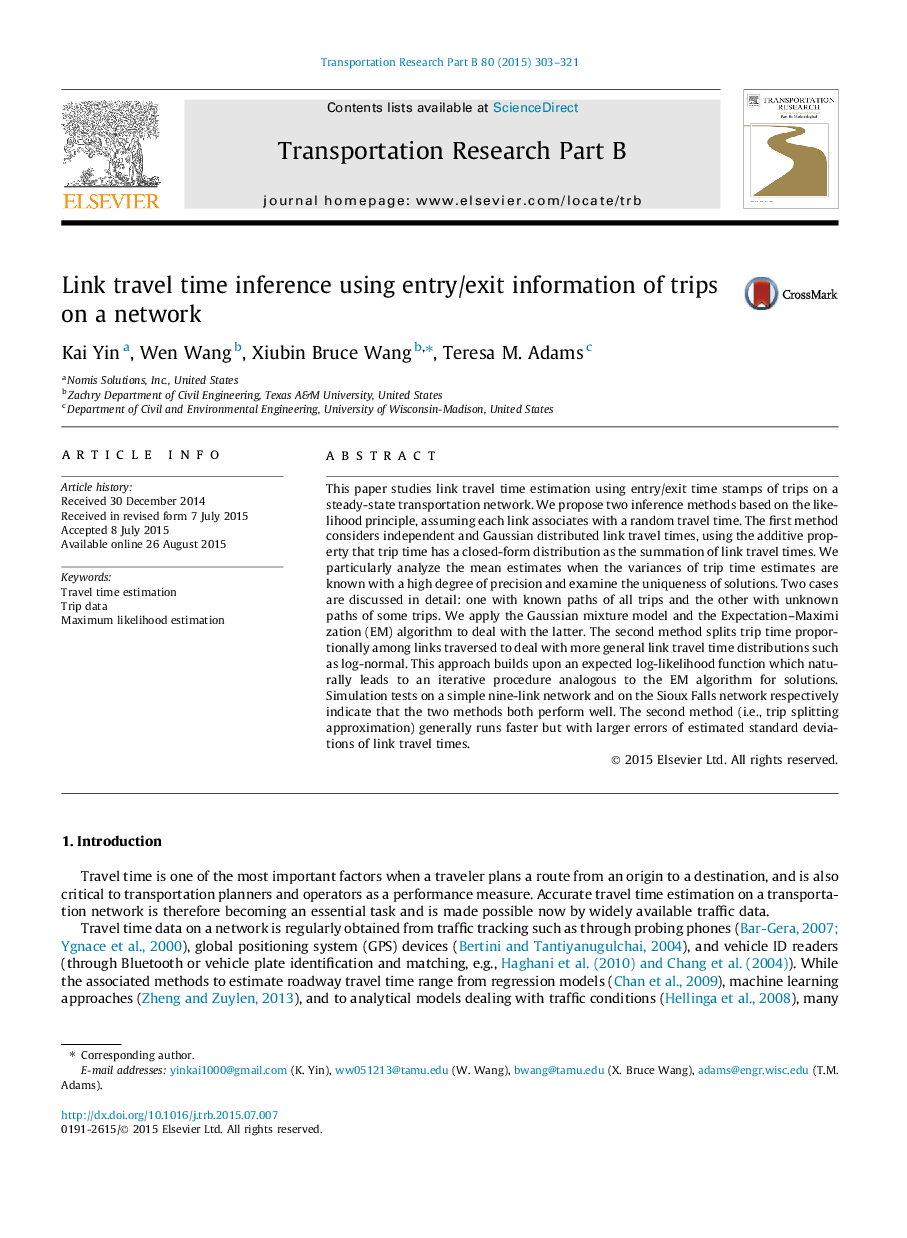| Article ID | Journal | Published Year | Pages | File Type |
|---|---|---|---|---|
| 1131724 | Transportation Research Part B: Methodological | 2015 | 19 Pages |
Abstract
This paper studies link travel time estimation using entry/exit time stamps of trips on a steady-state transportation network. We propose two inference methods based on the likelihood principle, assuming each link associates with a random travel time. The first method considers independent and Gaussian distributed link travel times, using the additive property that trip time has a closed-form distribution as the summation of link travel times. We particularly analyze the mean estimates when the variances of trip time estimates are known with a high degree of precision and examine the uniqueness of solutions. Two cases are discussed in detail: one with known paths of all trips and the other with unknown paths of some trips. We apply the Gaussian mixture model and the Expectation-Maximization (EM) algorithm to deal with the latter. The second method splits trip time proportionally among links traversed to deal with more general link travel time distributions such as log-normal. This approach builds upon an expected log-likelihood function which naturally leads to an iterative procedure analogous to the EM algorithm for solutions. Simulation tests on a simple nine-link network and on the Sioux Falls network respectively indicate that the two methods both perform well. The second method (i.e., trip splitting approximation) generally runs faster but with larger errors of estimated standard deviations of link travel times.
Related Topics
Social Sciences and Humanities
Decision Sciences
Management Science and Operations Research
Authors
Kai Yin, Wen Wang, Xiubin Bruce Wang, Teresa M. Adams,
